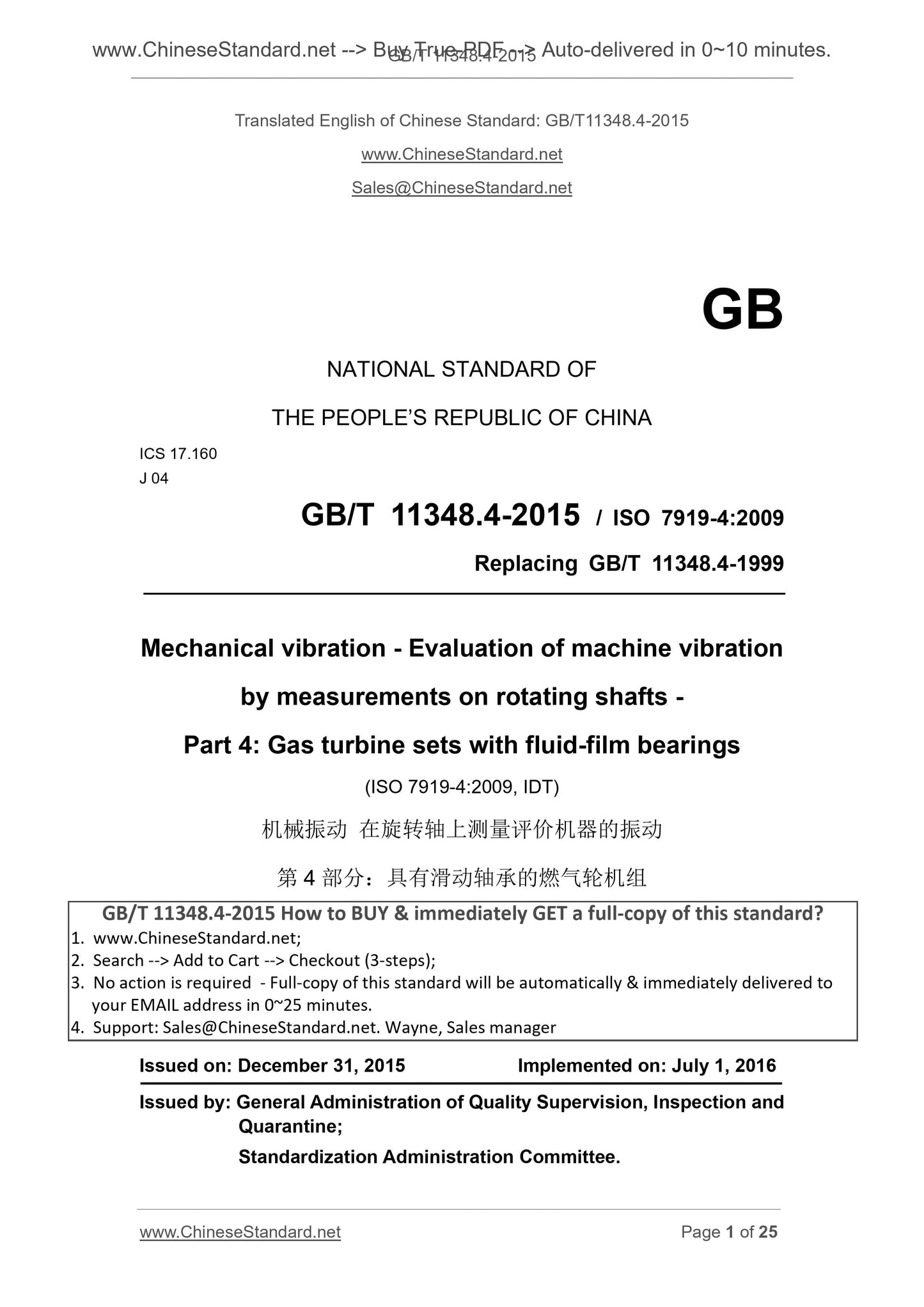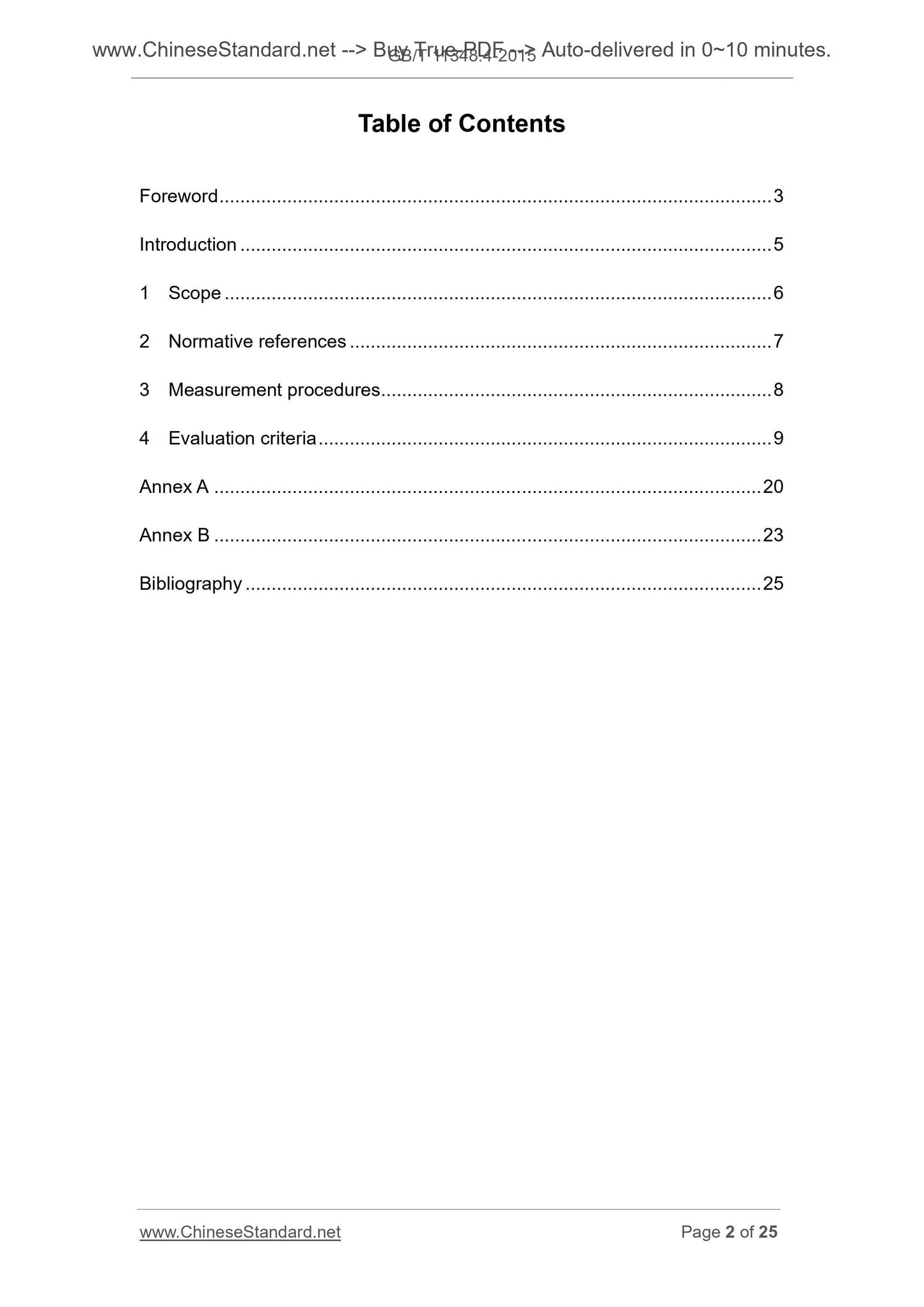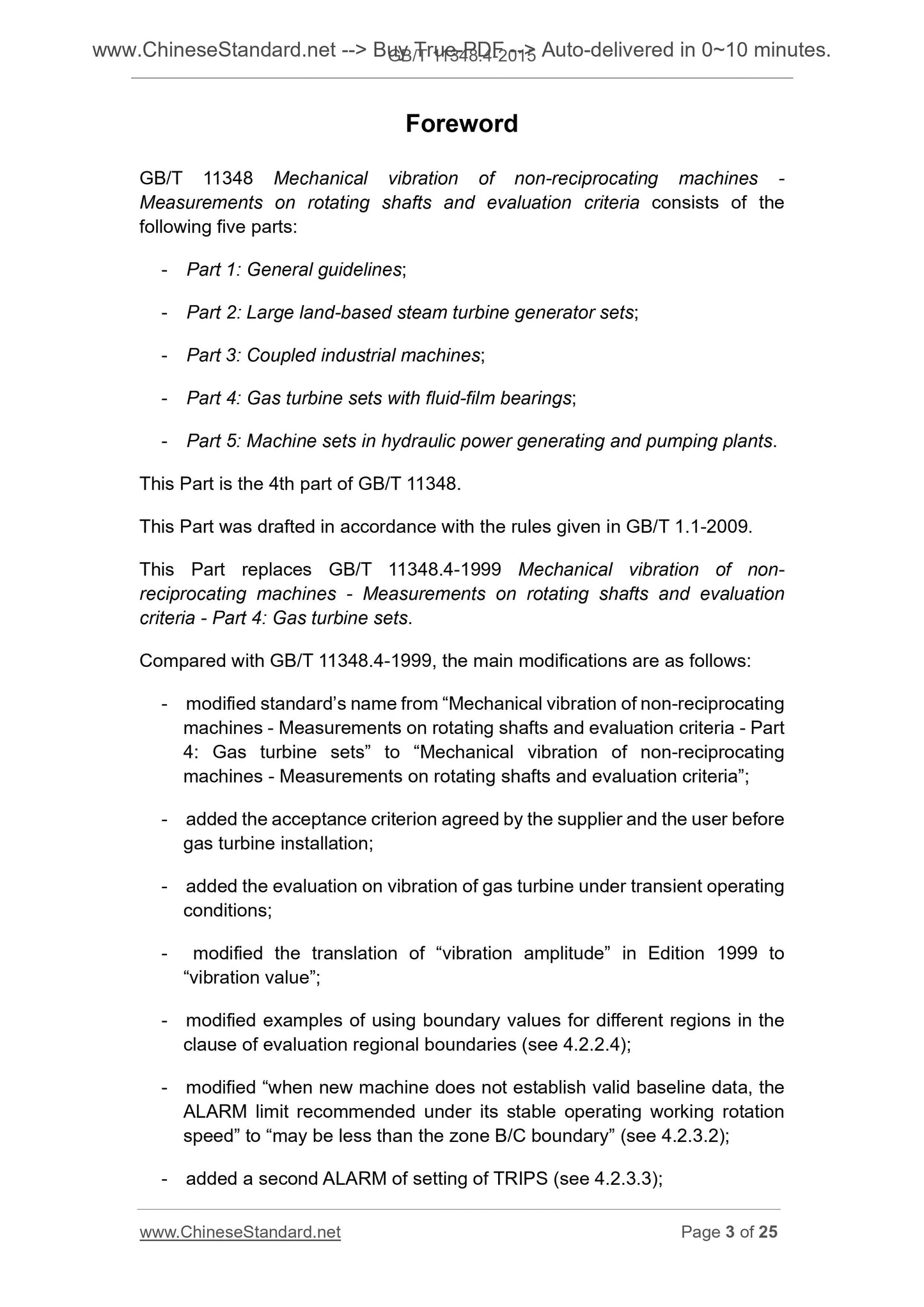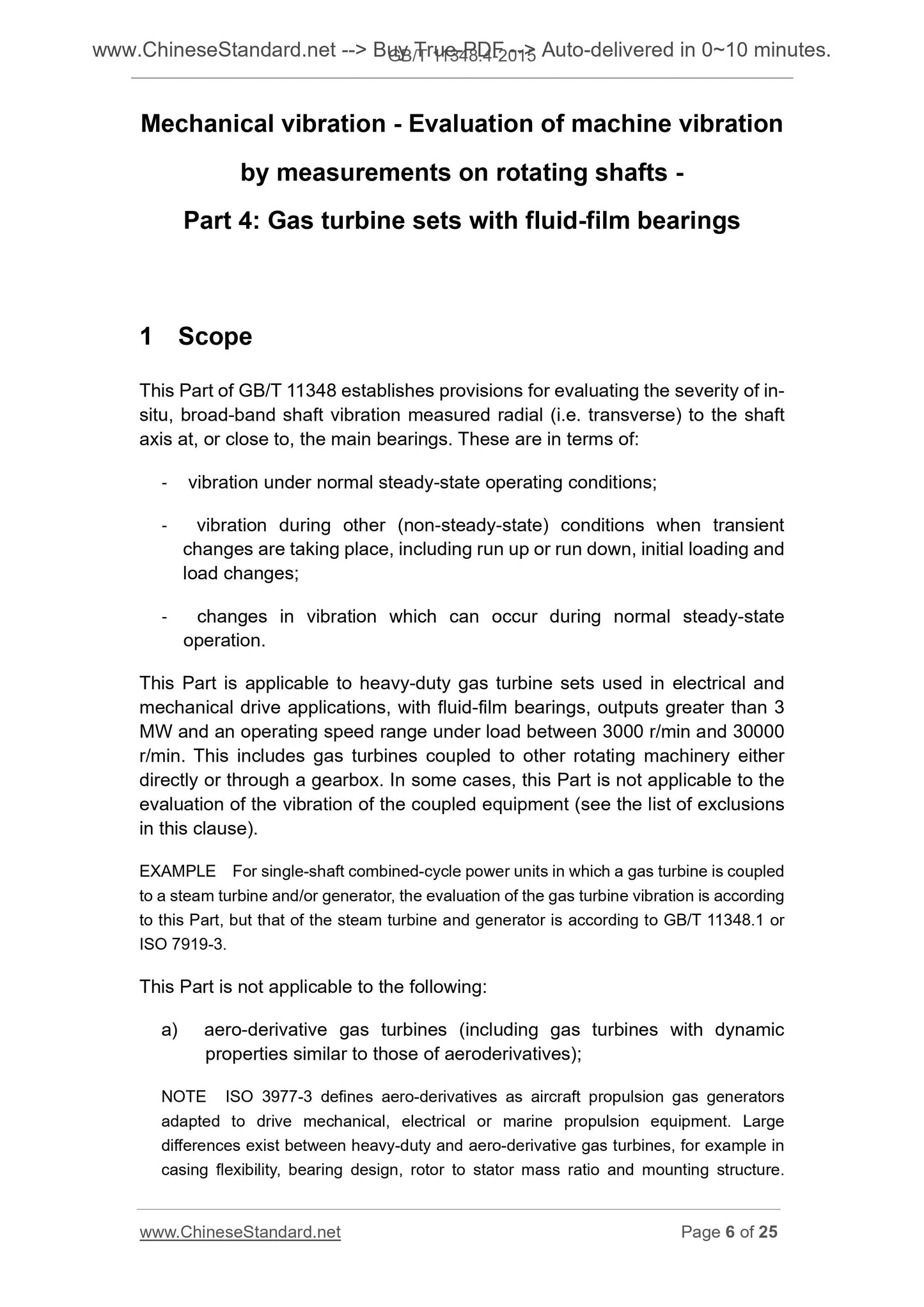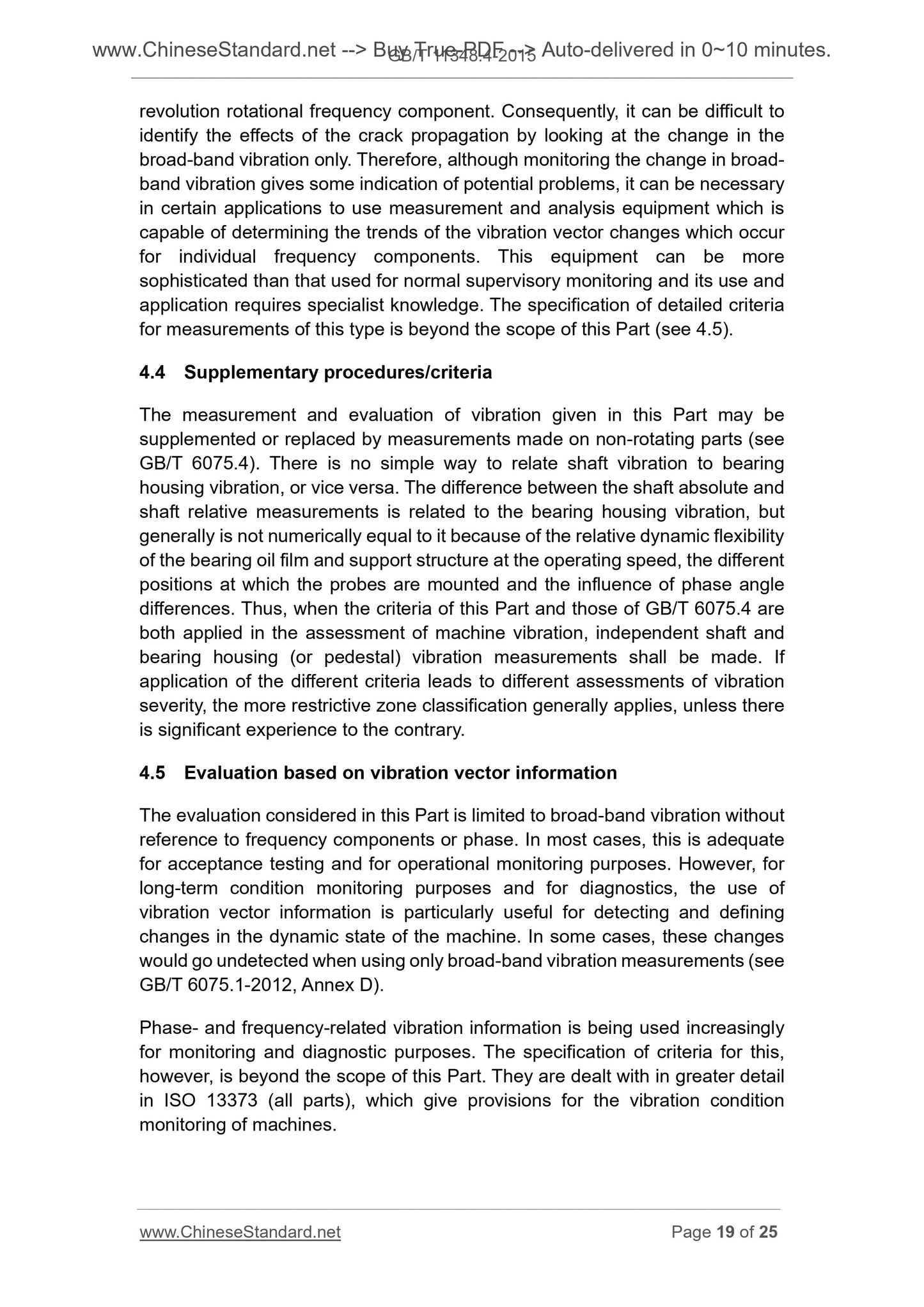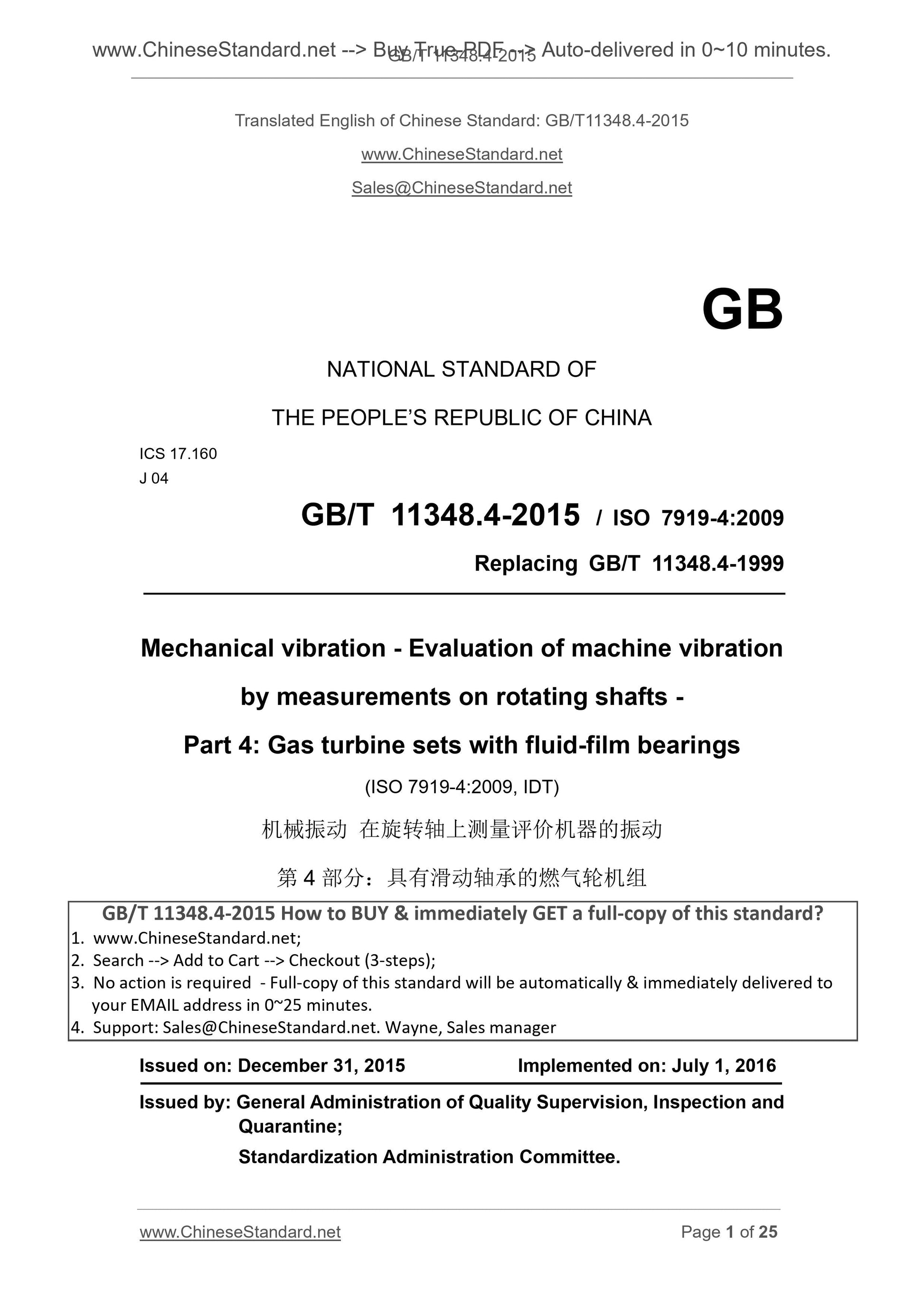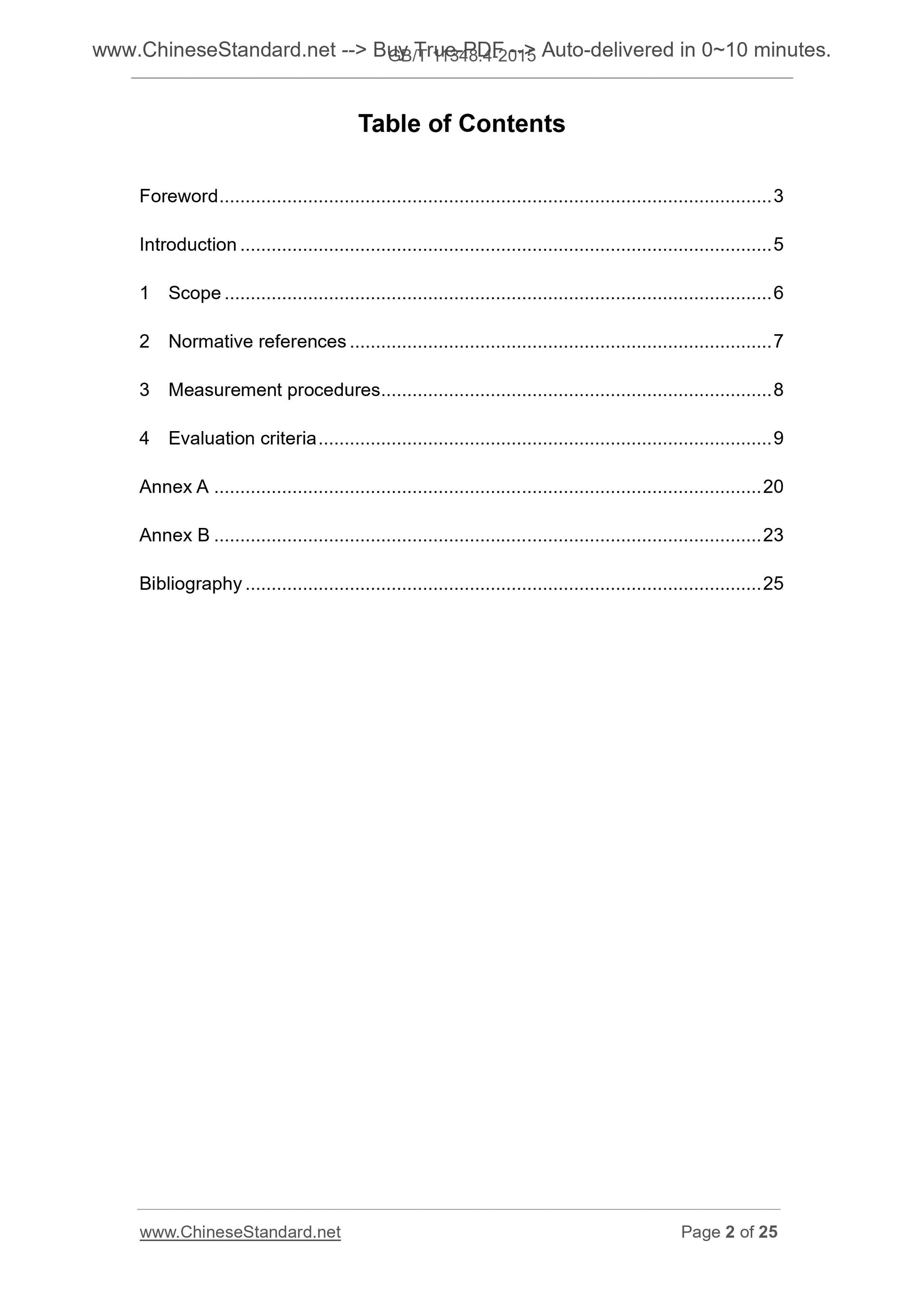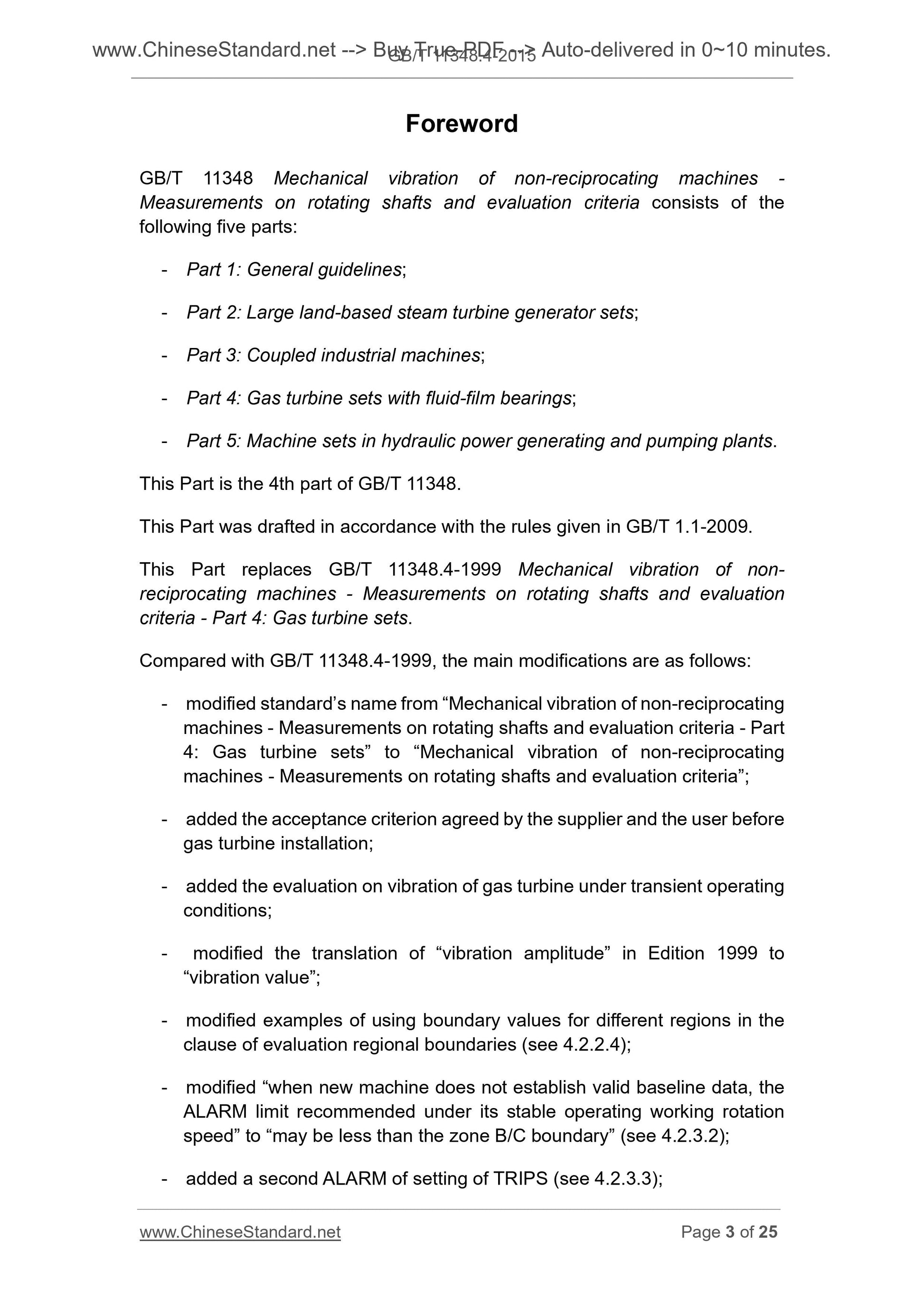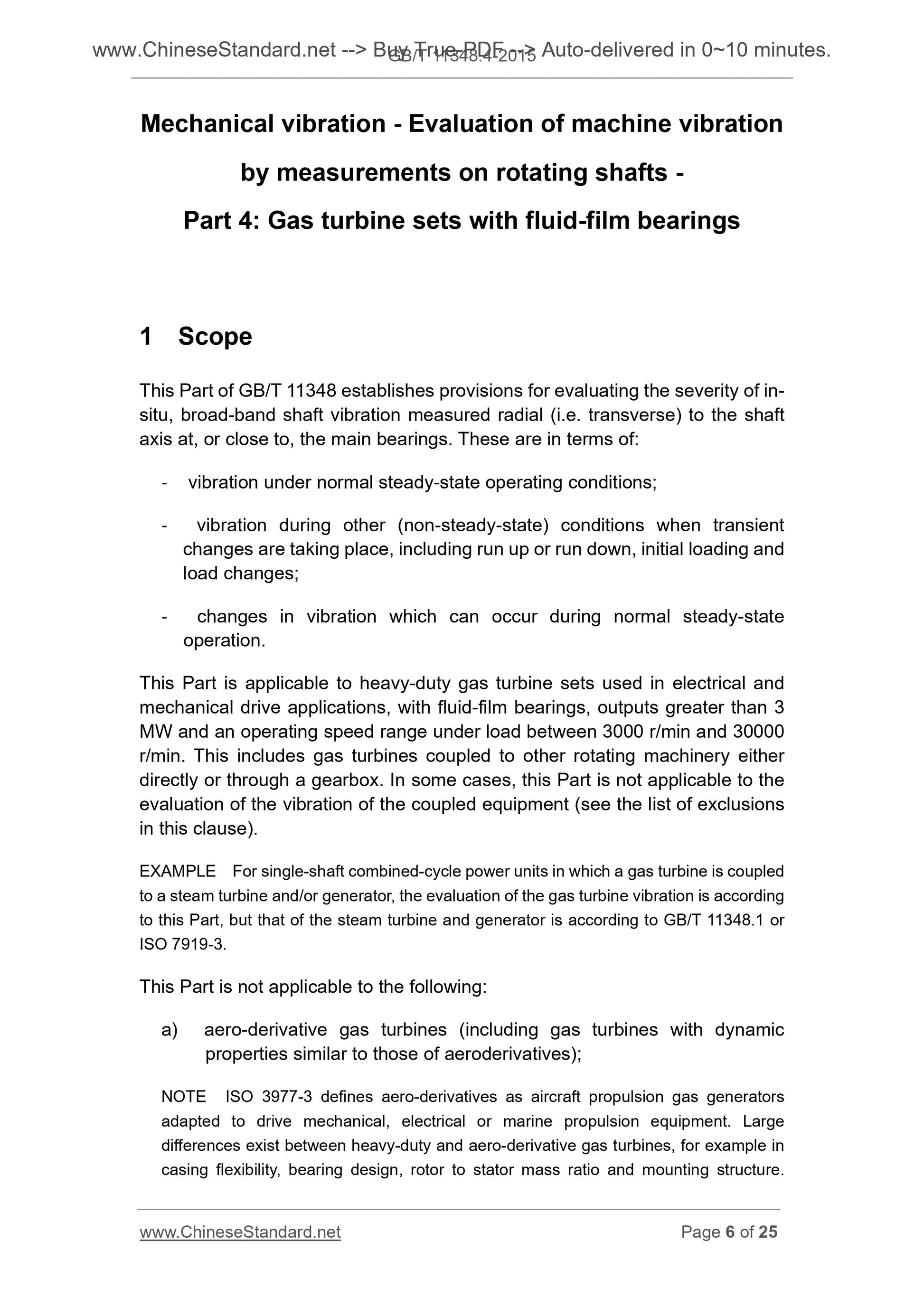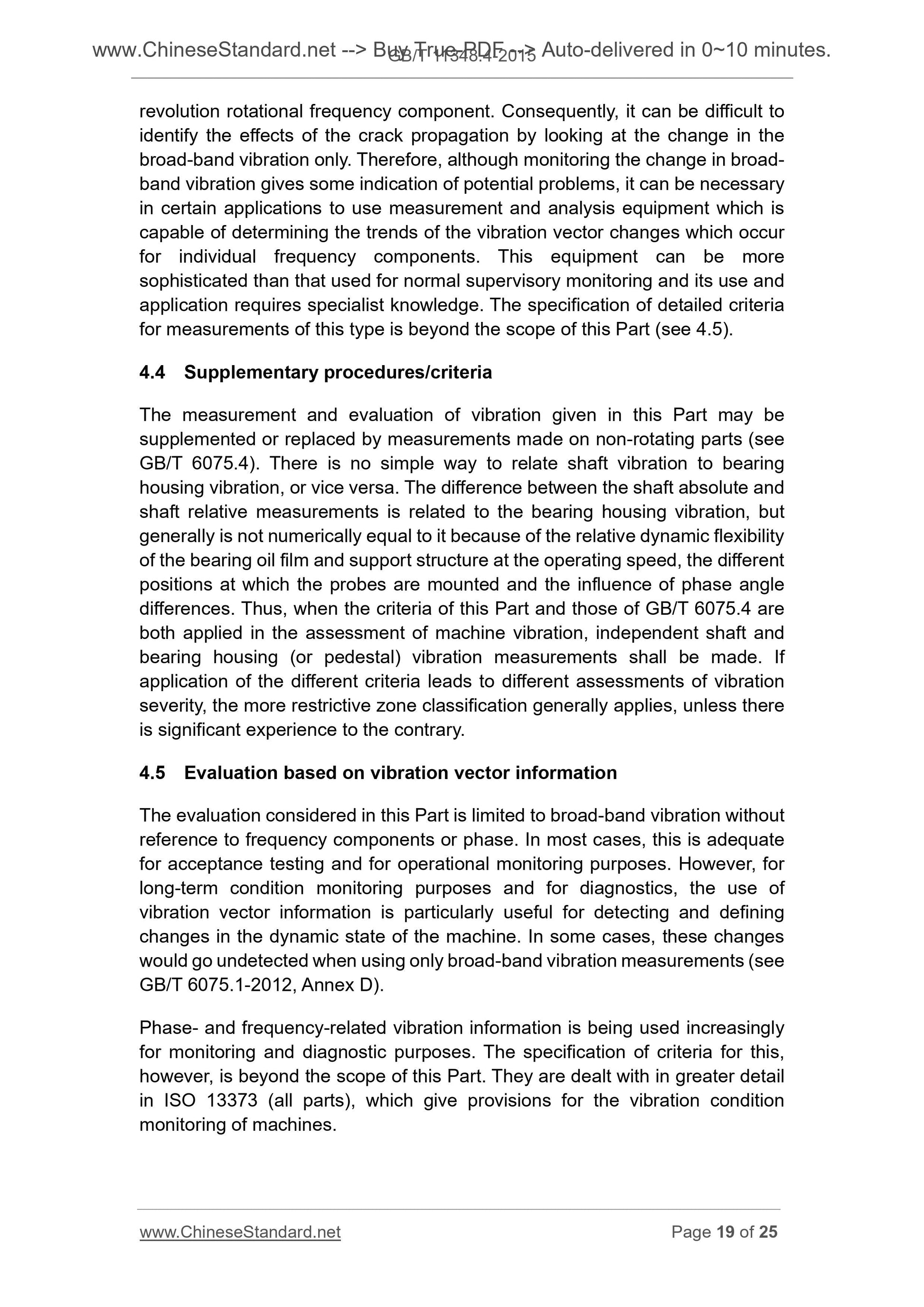1
/
of
5
www.ChineseStandard.us -- Field Test Asia Pte. Ltd.
GB/T 11348.4-2015 English PDF (GB/T11348.4-2015)
GB/T 11348.4-2015 English PDF (GB/T11348.4-2015)
Regular price
$130.00
Regular price
Sale price
$130.00
Unit price
/
per
Shipping calculated at checkout.
Couldn't load pickup availability
GB/T 11348.4-2015: Mechanical vibration -- Evaluation of machine vibration by measurements on rotating shafts -- Part 4: Gas turbine sets with fluid-film bearings
Delivery: 9 seconds. Download (and Email) true-PDF + Invoice.Get Quotation: Click GB/T 11348.4-2015 (Self-service in 1-minute)
Newer / historical versions: GB/T 11348.4-2015
Preview True-PDF
Scope
This Part of GB/T 11348 establishes provisions for evaluating the severity of in-situ, broad-band shaft vibration measured radial (i.e. transverse) to the shaft
axis at, or close to, the main bearings. These are in terms of:
‐ vibration under normal steady-state operating conditions;
‐ vibration during other (non-steady-state) conditions when transient
changes are taking place, including run up or run down, initial loading and
load changes;
‐ changes in vibration which can occur during normal steady-state
operation.
This Part is applicable to heavy-duty gas turbine sets used in electrical and
mechanical drive applications, with fluid-film bearings, outputs greater than 3
MW and an operating speed range under load between 3000 r/min and 30000
r/min. This includes gas turbines coupled to other rotating machinery either
directly or through a gearbox. In some cases, this Part is not applicable to the
evaluation of the vibration of the coupled equipment (see the list of exclusions
in this clause).
EXAMPLE For single-shaft combined-cycle power units in which a gas turbine is coupled
to a steam turbine and/or generator, the evaluation of the gas turbine vibration is according
to this Part, but that of the steam turbine and generator is according to GB/T 11348.1 or
ISO 7919-3.
This Part is not applicable to the following:
a) aero-derivative gas turbines (including gas turbines with dynamic
properties similar to those of aeroderivatives);
NOTE ISO 3977-3 defines aero-derivatives as aircraft propulsion gas generators
adapted to drive mechanical, electrical or marine propulsion equipment. Large
differences exist between heavy-duty and aero-derivative gas turbines, for example in
casing flexibility, bearing design, rotor to stator mass ratio and mounting structure.
revolution rotational frequency component. Consequently, it can be difficult to
identify the effects of the crack propagation by looking at the change in the
broad-band vibration only. Therefore, although monitoring the change in broad-
band vibration gives some indication of potential problems, it can be necessary
in certain applications to use measurement and analysis equipment which is
capable of determining the trends of the vibration vector changes which occur
for individual frequency components. This equipment can be more
sophisticated than that used for normal supervisory monitoring and its use and
application requires specialist knowledge. The specification of detailed criteria
for measurements of this type is beyond the scope of this Part (see 4.5).
4.4 Supplementary procedures/criteria
The measurement and evaluation of vibration given in this Part may be
supplemented or replaced by measurements made on non-rotating parts (see
GB/T 6075.4). There is no simple way to relate shaft vibration to bearing
housing vibration, or vice versa. The difference between the shaft absolute and
shaft relative measurements is related to the bearing housing vibration, but
generally is not numerically equal to it because of the relative dynamic flexibility
of the bearing oil film and support structure at the operating speed, the different
positions at which the probes are mounted and the influence of phase angle
differences. Thus, when the criteria of this Part and those of GB/T 6075.4 are
both applied in the assessment of machine vibration, independent shaft and
bearing housing (or pedestal) vibration measurements shall be made. If
application of the different criteria leads to different assessments of vibration
severity, the more restrictive zone classification generally applies, unless there
is significant experience to the contrary.
4.5 Evaluation based on vibration vector information
The evaluation considered in this Part is limited to broad-band vibration without
reference to frequency components or phase. In most cases, this is adequate
for acceptance testing and for operational monitoring purposes. However, for
long-term condition monitoring purposes and for diagnostics, the use of
vibration vector information is particularly useful for detecting and defining
changes in the dynamic state of the machine. In some cases, these changes
would go undetected when using only broad-band vibration measurements (see
GB/T 6075.1-2012, Annex D).
Phase- and frequency-related vibration information is being used increasingly
for monitoring and diagnostic purposes. The specification of criteria for this,
however, is beyond the scope of this Part. They are dealt with in greater detail
in ISO 13373 (all parts), which give provisions for the vibration condition
monitoring of machines.
Basic Data
| Standard ID | GB/T 11348.4-2015 (GB/T11348.4-2015) |
| Description (Translated English) | Mechanical vibration -- Evaluation of machine vibration by measurements on rotating shafts -- Part 4: Gas turbine sets with fluid-film bearings |
| Sector / Industry | National Standard (Recommended) |
| Classification of Chinese Standard | J04 |
| Classification of International Standard | 17.160 |
| Word Count Estimation | 15,199 |
| Date of Issue | 2015-12-31 |
| Date of Implementation | 2016-07-01 |
| Older Standard (superseded by this standard) | GB/T 11348.4-1999 |
| Regulation (derived from) | State Standard Announcement 2015 No.43 |
| Issuing agency(ies) | General Administration of Quality Supervision, Inspection and Quarantine of the People's Republic of China, Standardization Administration of the People's Republic of China |
Share
